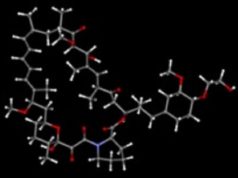
Cardiovascular systems (CSI) presented six-month data from its LIBERTY 360 degrees post-market study in a presentation at the 29th International Symposium on Endovascular Therapy (ISET; 4-8 February, Hollywood, USA). The study is evaluating the acute and long-term clinical and economic outcomes of peripheral vascular interventions in treating patients with symptomatic lower extremity peripheral artery disease.
Physicians were able to use any US Food and Drug Administration (FDA)-approved device, including CSI’s Diamondback 360 peripheral orbital atherectomy system. Findings continue to demonstrate that peripheral vascular interventions can be successful in treating patients in all Rutherford Classes and suggest that “watchful waiting” for patients in Rutherford Class 2-3 and “primary amputation” for patients in Rutherford Class 6 may not be necessary.
Six-month study outcomes were presentedby William Gray of Main Line Health, Wynnewood, USA.
- Findings suggest that on averagperipheral vascular interventions can restore Rutherford 4-5 patients with critical limb ischaemia status (eg. limb pain at rest, cold and/or numbness in feet, open or non-healing wounds on toes or foot) to moderate claudicant status (eg. limb pain during movement)
- Through six months, these data demonstrate on average peripheral artery disease patients (Rutherford 2-6) post-peripheral vascular interventions have maintained good outcomes and positive changes in Rutherford classification
| Change in Rutherford Classification Following Endovascular Intervention | ||||||
| Baseline |
30 Days | 6 Months | ||||
| RC 2-3 | 2.8 | 1.3 | 1.4 | |||
| RC 4-5 | 4.5 | 3.1 | 2.3 | |||
| RC 6 | 6.0 | 5.5 | 4.6 | |||
Table 1: All Rutherford Classes show improvement in RC from baseline to 30 days. RC4-5 and RC6 show continued improvement from 30 days to six months while RC2-3 maintains improvement at six months.
Gray said, “Following endovascular intervention, we saw a marked improvement across all Rutherford Classes at six months: Rutherford 4-5 and Rutherford 6 patients showed continued improvement from 30 days to six months, while Rutherford 2-3 patients maintained improvement at six months. We also saw a high freedom from major adverse events (MAE) across all classes. This suggests that endovascular intervention is an alternative treatment option in place of watchful waiting or even primary amputation.”
| Rutherford Classification | ||||||
| RC 2-3 | RC 4-5 | RC 6 | ||||
| Freedom from (FF) MAE (6-month) | 92.6% | 81.2% | 73.7% | |||
| FF Major Amputation | 99.8% | 96.8% | 87.1% | |||
| FF Target Vessel Revascularisation (TVR) | 93.0% | 83.1% | 85.1% | |||
| FF Death | 97.1% | 95.3% | 85.1% | |||
Table 2: High freedom from MAEs at six months across all Rutherford Classes. Kaplan-Meier method used to estimate event-free rates. MAE defined as death (≤30 days after the procedure), major amputation of the target limb, and TVR.
According to VascuQoL, a patient-reported, peripheral artery disease-specific health-related quality of life questionnaire, patients in the LIBERTY 360° study reported improved quality of life across all Rutherford Classes, including such measures as physical activity, symptoms and pain.
During a concurrent session at ISET, Jihad Mustapha (Wyoming, USA) explored the importance the LIBERTY 360° Rutherford 6 data will have on the endovascular field. He stated, “LIBERTY 360° is novel in that it addresses all Rutherford Classes, including Class 6, representing some of the most challenging and life-threatening PAD cases. Six-month data suggests that these patients can be treated successfully with endovascular interventions—a significant step in establishing a new standard of care for this difficult-to-treat population.”
Additionally, it was shared that the recently released 2016 Guidelines on the Management of Patients with peripheral artery disease from the American Heart Association/American College of Cardiology support this data, stating:
- Revascularisation is a reasonable treatment option for patients with lifestyle-limiting claudication and an inadequate response to medical management and exercise; and
- An evaluation for revascularization options should be performed by an interdisciplinary care team before amputation in the patient with critical limb ischaemia










